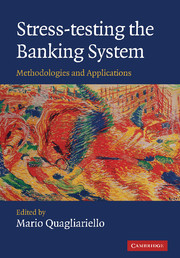Conclusions
Published online by Cambridge University Press: 18 December 2009
Summary
If this same story has given the reader any pleasure, he must thank the anonymous author, and, in some measure, his reviser, for the gratification. But if, instead, we have only succeeded in wearying him, he may rest assured that we did not do so on purpose.
A. Manzoni, The Betrothed, 1840–2Macroeconomic stress tests have constantly improved over the years, becoming a crucial component of the toolkit of banking supervisors and central banks for assessing financial stability. As shown in the second part of the book, the implementation of comprehensive stress-testing programs and the development of quantitative methodologies have allowed public authorities to make significant progress in this field.
Notwithstanding the remarkable advances and the encouraging state of the art, there are still major challenges to be addressed. They concern the methodological side, as well as data constraints and the practical use of stress test results. In these concluding remarks, I will not list all the issues that remain open. They have already – and with much more competence – been discussed in the previous chapters. I would rather recall those shortcomings that are, in my view, the top priorities for future work.
As far as methodology is concerned, a first area for improvements is clearly the calibration of the shocks and the design of macroeconomic scenarios. While it is unquestionable that they should be extreme but plausible, it is not at all obvious what ‘extreme and plausible’ means.
- Type
- Chapter
- Information
- Stress-testing the Banking SystemMethodologies and Applications, pp. 318 - 321Publisher: Cambridge University PressPrint publication year: 2009



